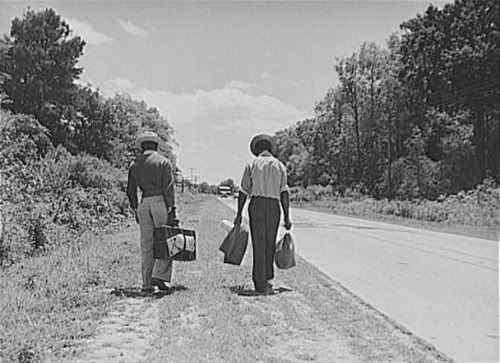In a 1989 paper entitled “Blacks in Orange County,” Dr. Emory J. Tolbert of Cal State Fullerton describes the social and economic hardships faced by African Americans in this historically conservative county.
African Americans accompanied many of the early Spanish conquistadors to Southern California, like Cortes and Coronado. They were primarily servants, slaves, and guides.
As the years went on, these Africans intermarried with the Native American population, and some of these mixed-race folks achieved some economic and political power, such as Pio Pico, the last Mexican governor of California, before the United States conquered it in the Mexican-Amerian War.
After the U.S. took over, employment became difficult for those of African descent. Like other minority groups, they were restricted to railroad and agricultural work, but their struggle was harder. Tolbert writes, “Railroad employment was unstable for blacks, who were usually excluded from unions…without job prospects in Orange County, blacks found living there impossible.” Because of this job discrimination, the total African American population of Orange County in 1930 was 231. This number was much lower in Fullerton (about 18 people).
In addition to this “run-of-the-mill” job and housing discrimination, African Americans in Orange County faced another challenge in the 1920s: the re-emergence of the Ku Klux Klan.
Klansmen in Orange County were not just poor/uneducated whites. They were mayors, city council members, pastors, teachers, judges, and law enforcement. Tolbert writes, “In Southern California, Anaheim proved to be fertile gound for the Klan. Reverend Leon L. Myers, pastor of the First Christian Church in Anaheim, led the anti-Jewish, anti-Catholic, and anti-Black propaganda crusade in a rapidly growing city that already had 12,000 residents.” The Klan extended to Fullerton. In 1923, there was a Klan Rally in Amerige Park in Fullerton that had over 5,000 attendees.
With an environment this hostile, it’s understandable why so few African Americans chose to settle in Orange County.
During World War II, with American servicemen abroad, the Orange County Citrus Growers, Inc. brought 1600 Jamaicans to work their groves in 1945. Tolbert writes, “Unaccustomed to Jim Crow practices, and unwilling to tolerate them, these men clashed with local merchants, who were unaccustomed to assertive blacks. Eventually, they staged a sit-down strike in La Habra, and finally left the County.”
The founding of the Santa Ana NAACP (National Association for the Advancement of Colored People) in 1945 (30 years after the Los Angeles NAACP was founded) allowed some measure of political protection for African Americans in Orange County. Civil Rights legislation in the 1960s and 1970s, and the formation of organizations like the Orange County Fair Housing Council, further helped their struggle.
By 1970, there were over 10,000 African Americans in Orange County, roughly 2% of the population. To this day, the African American population remains under 2%, largely due to intentionally restrictive housing prices and perhaps the lingering phantom of a century of discrimination and exclusion.

